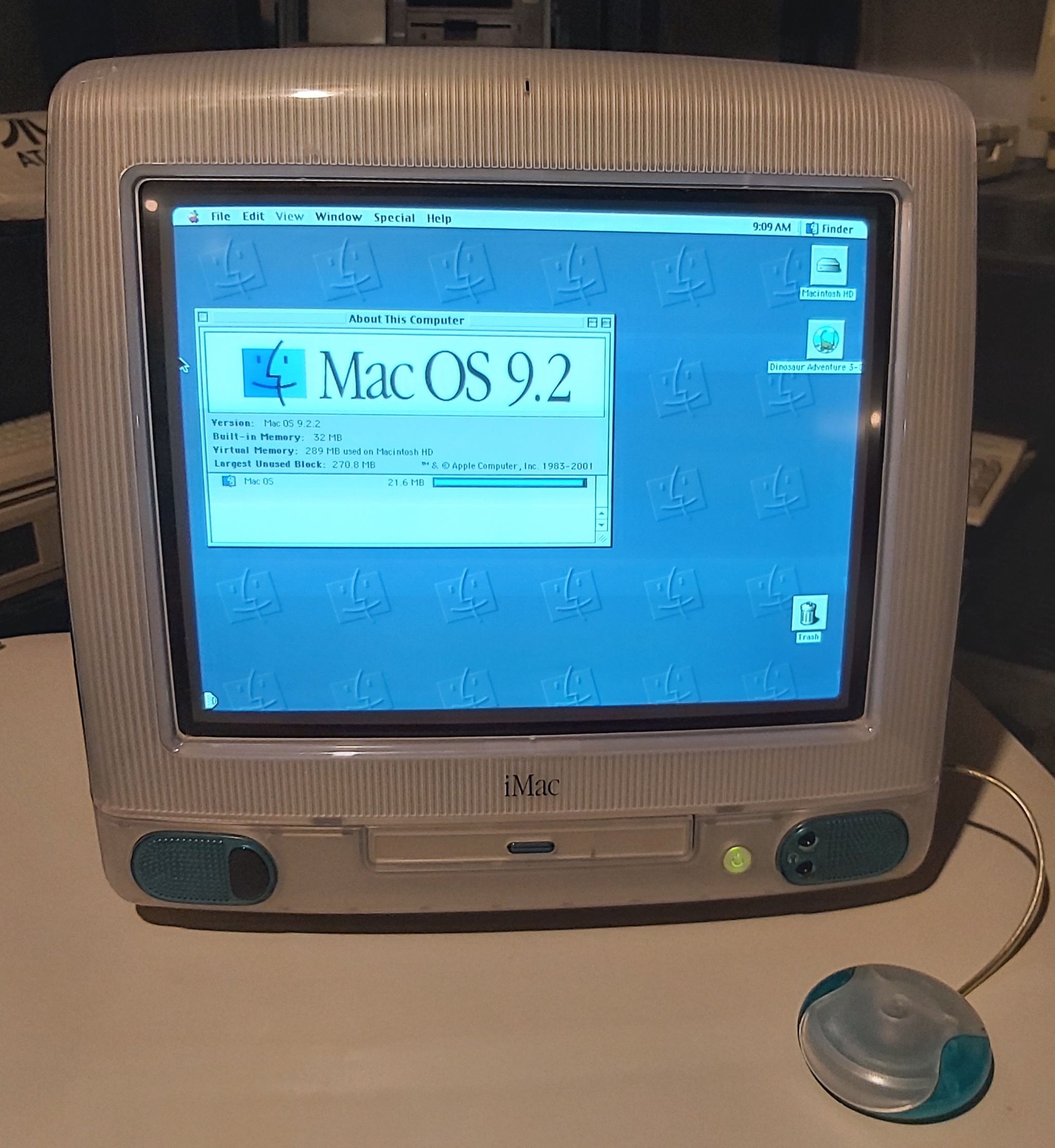The computer that saved Apple

The very first iMac model (shown above) was released in 1998, came in one colour called Bondi Blue, and had a semi-translucent case that allowed you to see the components inside. It had a 233MHz PowerPC G3 CPU, 32MB of RAM, CD-ROM drive, and shipped with MacOS 8.1 (soon upgraded to MacOS 9 - the last version before Apple moved to Mac OS X).
While passing by a convenience store in my home town of Hespeler, I muttered in distaste when I noticed that someone had dumped a lot of furniture and various other household items next to the already-full dumpster at the back. But just as I was about to look away, I noticed something familiar. Peeking out of the top of a Rubbermaid tub was what looked like the rear of an old iMac. When I walked over to it, I noticed that it was a Bondi Blue iMac in mint condition, with the original keyboard and mouse. So I took it home, turned it on, and it booted to life.
Here’s a video walkthrough of it, including a demo of its performance (which was excellent compared to other systems of the time): https://www.youtube.com/watch?v=F7Lq8mYdx_E
If it were any other iMac model from that period of time, I would have left it there, but the original Bondi Blue iMac has historical significance.
The 1990s was not kind to Apple. Microsoft Windows-based PCs had become ubiquitous alongside the rise of the Internet, and like Commodore Amigas, Apple Macintosh computers were fading into the sunset fast. By 1997, Apple was on life support and within months of bankruptcy. That same year, Dell CEO Michael Dell publicly said that if he were put in charge of Apple, he’d “shut it down and give the money back to the shareholders.”
Apple needed a miracle. They needed a computer that could compete in the Internet age, and they needed it fast.
When their co-founder Steve Jobs returned in 1997 to run the company, he axed most of their product line and focused on bringing the iMac to market in 1998. The “i” in iMac stood for Internet, and it was designed to be an all-in-one computer that got you on the Internet. Just plug in the keyboard, mouse and network cable (or phone line for dial-up Internet) and turn it on: https://www.youtube.com/watch?v=2iyMf3tlKpU
By contrast, if you were to buy a Windows PC at the time, you’d need to connect it to the monitor, speakers, microphone, keyboard, mouse and network cable (or phone line). That is, provided your PC was outfitted with the right expansion cards when you bought it. In other words, there were plenty of cables and complexity with Windows PCs.
The iMac’s convenience came at a cost though. While you could buy a complete Windows PC with good hardware specifications in Canada for under $1000 in 1998, a base iMac cost $2000 ($1299 USD with a 1.54 exchange rate at the time).
Luckily for Apple, it turned out that there were a lot of people who were more than willing to pay for the convenience of an easy Internet experience, and the Bondi Blue iMac turned out to be a hit for Apple. Of course, they were still incredibly rare compared to Windows PCs at the time, but enough people bought them to turn a profit at Apple for the first time in many years. Had the Bondi Blue iMac been a sales disaster when it hit the market, Apple would have certainly perished.
After their close brush with death, Apple knew they had to fight to remain profitable. They used the profit from the iMac to bring the crazy popular iPod to market, as well as release a new operating system called Mac OS X to bolster their computer line. And of course, the iPhone and iPad that followed propelled them to stardom. But none of that would have been possible if Apple had died in the 1990s. In short, by releasing the Bondi Blue iMac, Apple was able to survive long enough to get to the iPod and eventually where they are today.
Apple has moved on to greener pastures without looking back, and few people realize the role that the original Bondi Blue iMac played in bringing Apple back from certain death in the 1990s. To most, it’s just an old Apple computer, destined only to be discarded next to a dumpster behind a convenience store.